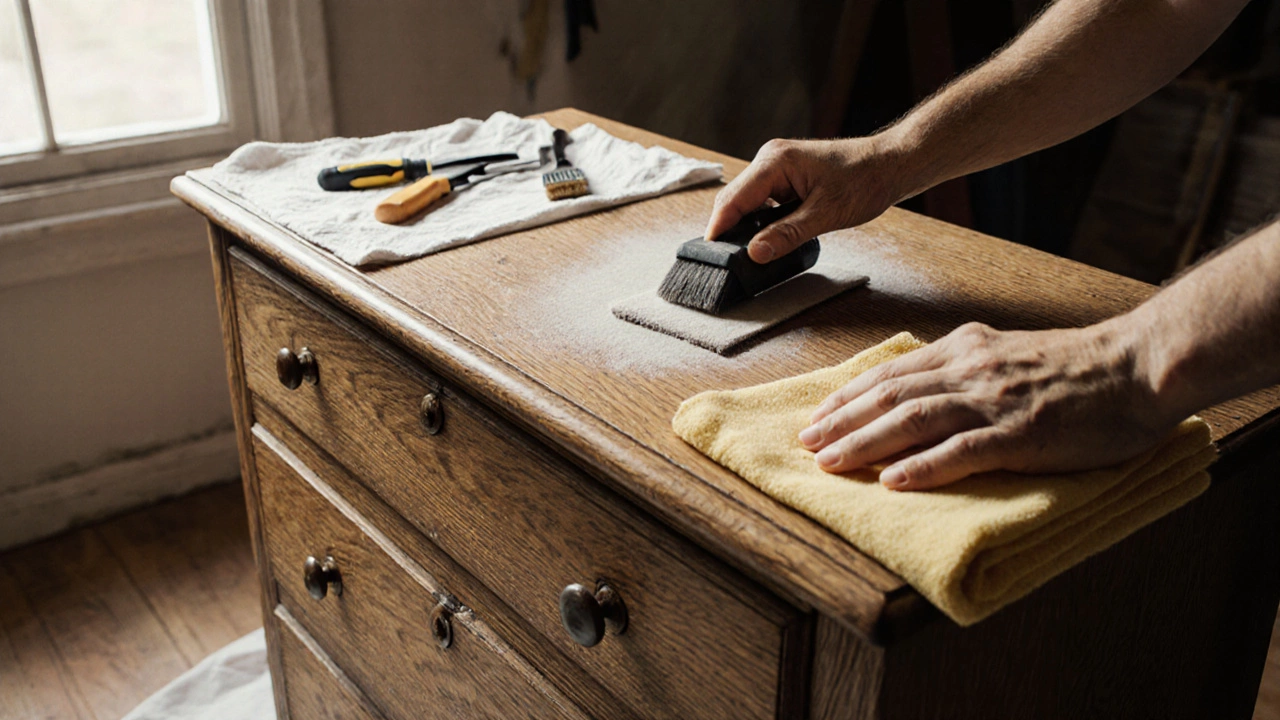When you think of vinyl wrap furniture, a thin, adhesive film applied to wood, metal, or laminate surfaces to change their look without sanding or painting. Also known as furniture wrap, it’s a fast, affordable way to give old cabinets, tables, or chairs a brand-new feel—no carpentry skills needed. This isn’t just a trend. It’s a practical fix for people who love their furniture but hate its color, texture, or wear. In the UK, where homes are often smaller and budgets tighter, vinyl wrap has become a go-to for renters, homeowners, and even small businesses looking to refresh spaces without the mess or cost of replacement.
It works on almost any smooth surface: a dated oak dining table, a scratched TV stand, even a worn-out bookshelf. You can mimic wood grain, stone, metallic finishes, or bold solid colors—all without touching a paintbrush. Unlike paint, which needs priming, drying time, and perfect ventilation, vinyl wrap sticks cleanly, peels off cleanly, and doesn’t emit fumes. That’s why it’s popular in homes with kids, pets, or anyone sensitive to chemicals. And because it’s durable and easy to clean, it holds up well in high-use areas like kitchens and living rooms.
Related to this are furniture makeover, the process of updating old furniture using low-cost, non-permanent methods, which includes staining, reupholstering, and adding new hardware. But vinyl wrap stands out because it changes the entire surface in hours, not days. It’s also linked to DIY furniture update, a growing movement of people repairing and redesigning their own home items instead of buying new. You don’t need a workshop. Just a clean surface, a squeegee, and patience. Many UK households have used it to turn thrift store finds into statement pieces, or to match new decor without replacing entire sets.
What you’ll find in these posts isn’t just theory—it’s real results. People have used vinyl wrap to revive dining sets, update office furniture, and even give old wardrobes a modern matte finish. You’ll see how to avoid bubbles, how to wrap corners without tearing, and which brands actually last in humid UK climates. There’s also advice on when NOT to use it—like on heavily textured surfaces or items that get daily heavy use. And yes, we’ve tested it on everything from reclaimed pine to particleboard. Some surfaces work better than others, and you’ll learn exactly which ones.
This isn’t about replacing furniture. It’s about respecting it. About making smart choices that save money, reduce waste, and keep your home feeling personal. Whether you’re renting and can’t drill holes, or just don’t want to spend £500 on a new coffee table, vinyl wrap furniture gives you real control. The posts below show you how to do it right—no guesswork, no wasted material, no regrets.

Learn how to successfully apply vinyl wrap over wood furniture for a modern, affordable refresh. Discover prep steps, material choices, and long-term care tips to avoid peeling and bubbles.
More